How to Pin Baste a Quilt
Basting a quilt properly is key to a successful, professional, and pucker-free finished quilt. If you are new to quilting it can be hard to know where to start, and disappointing to finish a quilt only to notice the back is full of puckers and folds. I think we all have been there at least once!
If you ask 10 different quilters how they baste a quilt, you are likely to get 10 different answers. My mom taught me her method when I first started quilting. Although I’ve tried other techniques, such as spray basting*, I always come back to my trusty pin basting. Today I’m going to show you how to take those three all-important layers (quilt top, batting, and quilt backing) and prepare them to quilt. Let’s get started and learn how to pin baste a quilt!
* I sometimes will use spray baste on small items, such as pillows or bag panels, but for medium and large quilts I receive my best results when pin basting.
Materials to Pin Baste a Quilt
- Completed Quilt Top
- Batting—I prefer my batting about 3″ larger than my quilt top on all sides.
- Quilt Backing–I prefer my backing about 4″ larger than my quilt top on all sides.
- Curved Basting Pins—these just make life easier! Check your local quilt shop or craft store.
- Long Quilting Ruler (optional)—I use this about halfway through the tutorial for smoothing.
NOTE: I baste my quilts on carpet. If you don’t have access to carpet or a rug large enough to use this method, you can use painter’s tape at select points in the tutorial. I will point those out as we come to them. I’ve also heard of some quilters using carpeted space in their church, local library, local quilt shop classrooms or community center.
Instructions to Pin Baste a Quilt
Step 1. Lay out your quilt backing flat and smooth, right side down towards the carpet.
Step 2. I like to start basting my quilts on the center edge of any quilt side. Take one open curved basting pin and push point vertically down through the edge of the quilt, into the carpet until secure.
Step 3. Carefully smooth the quilt backing edge of any winkles, and place another pin about 4″ away from your first pin. It’s important to make sure your fabric doesn’t have any slack, but isn’t pulled unnaturally tight like a trampoline.
Repeat and place a pin about every 4″ until you reach the edge of the quilt.
NOTE: If you are basting on a solid surface floor, use painter’s tape to adhere your edges to the floor rather than pins.
Step 4. Repeat Step 3 and work your way out from the quilt edge center to the other corner of the quilt edge.
You have now pinned one side of your quilt backing to the floor.
Step 5. Move to the side directly opposite of the completed pinned side of your quilt. If you pinned the bottom side, move to the top side. If you pinned the left side, move to the right side.
Step 6. Once again, starting at the center edge of the quilt, pull the quilt backing so it is free of wrinkles or loose sections, but do not pull it unnaturally tight.
Step 7. Pin in place to the carpet. Continue placing pins down each side of the center pin, about every 4″, just as you did in Steps 3 and 4.
Step 8. Once you have both opposing sides pinned to the carpet, your quilt back should look like the photo below.
Step 9. Repeat this process again with the two remaining quilt backing sides. Remember to make sure your fabric is wrinkle free and smooth, but not pulled unnaturally tight.
Step 10. Once your quilt backing is pinned to the floor on all four sides, lay your batting on top of it. Gently smooth with your hand if necessary, so that no bumps, warps or wrinkles appear. I like my batting to be slightly smaller than my quilt backing, so that I always know where the edge of my backing is located.
Step 11. Lay your quilt top on top of your batting, taking care to lay it down straight. Usually this involves some slight repositioning once it’s laid out. At this point, I like to smooth out my quilt top so it’s nice and flat, with no warps or bumps. I have had great success using the edge of a long quilting ruler to smooth out my quilt tops. It allows me a long reach without putting unnecessary pressure from my body weight on my quilt sandwich.
I simply start in the middle, and slide the angled edge of the quilting ruler towards the side of the quilt. Repeat in all directions.
Step 12. Now we are going to pin the quilt top to the carpet, just like we did to the quilt backing earlier. This should require very little to no stretching and pulling of the quilt top, as long as you smoothed it nicely in the previous step.
Once again, start in the center of one of the quilt top edges.
NOTE: If you are basting on a solid surface floor, skip to Step 14.
Step 13. Pin all quilt top edges to the carpet.
Step 14. Now is the time those curved basting pins come in handy! Starting on any side of the quilt, take an open pin and scoop it into the quilt, grabbing all three layers. Pin the layers together. The curved safety pins make this very easy.
I especially like to pin at seam lines and intersections. Place pins about every 3″. I know it can be tempting to spread out the pins to 6″, 7″, 8″… but taking care to use the appropriate amount of pins and spacing are what will help insure a successful quilting process.
Step 15. Continue to place pins, working your way around the quilt. If I have a long reach to center blocks, I save those for the end. That way I am putting my body weight on areas of the quilt that have already been completely basted.
Once you are finished, your quilt top should look like the quilt photo below.
Step 16. Carefully work your way around your basted quilt and remove the pins that were placed into the carpet. Remember, there are two sets on each side—the quilt backing set and the quilt top set. Double check your carpet for any open pins that may have fallen away—those are no fun to step on later!
You are now basted and ready for quilting!
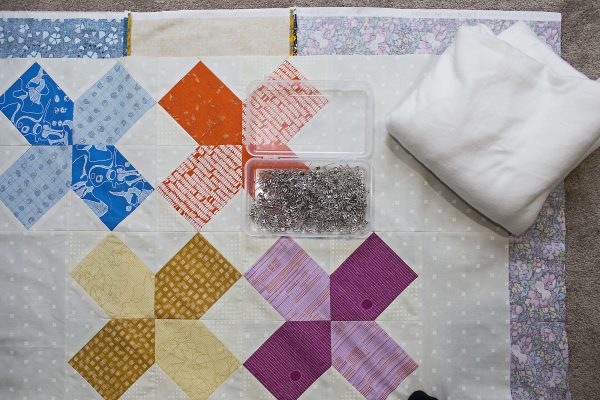
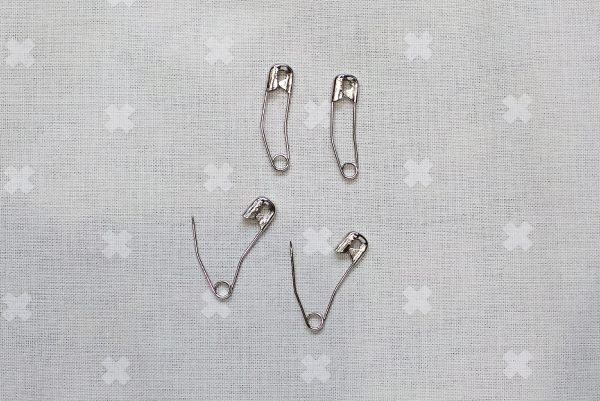
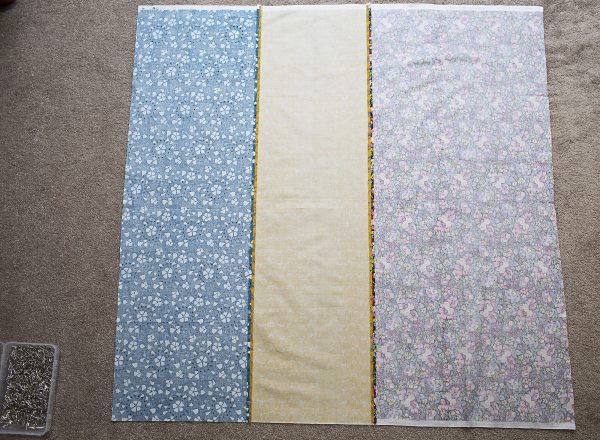
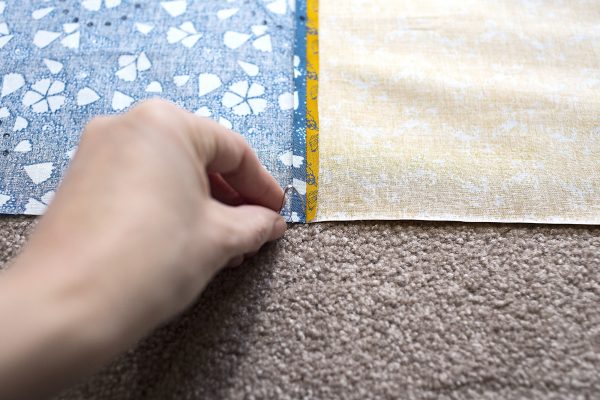
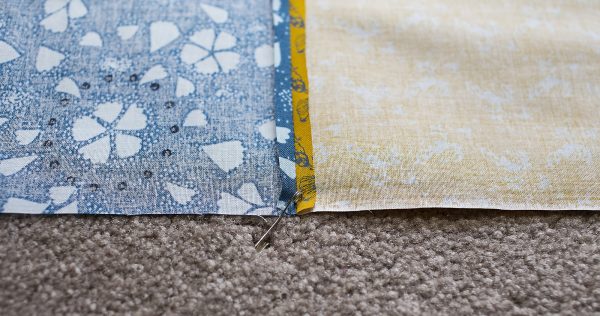
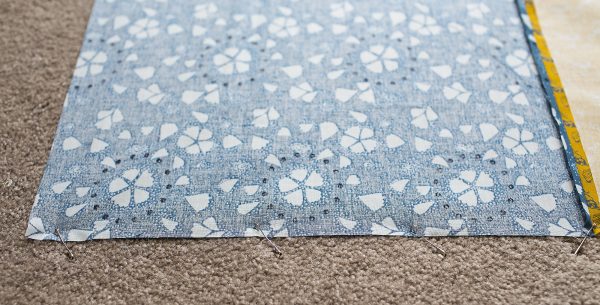
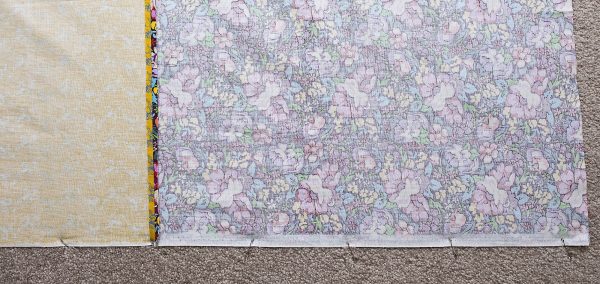
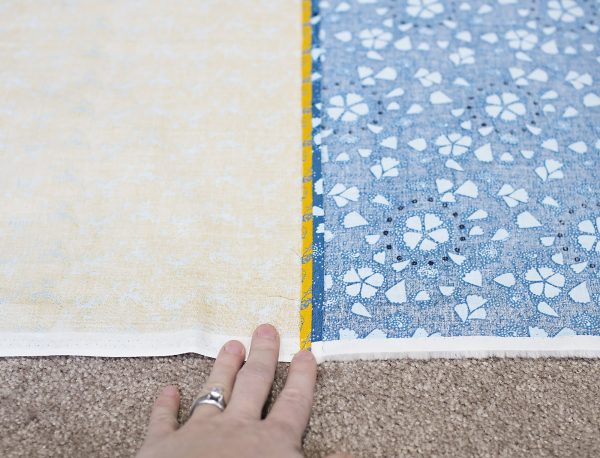
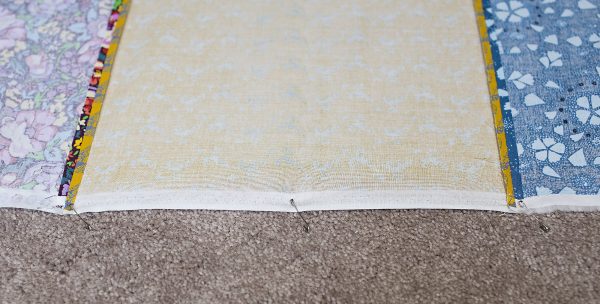
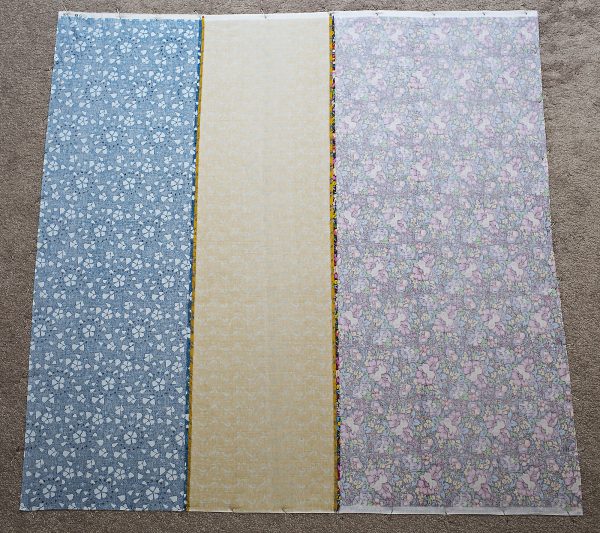
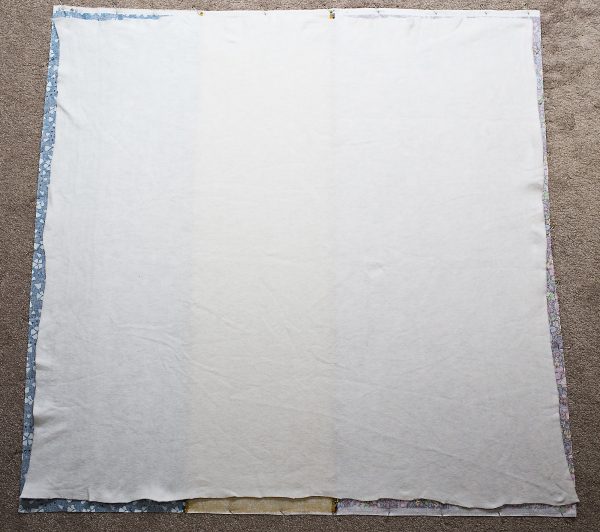
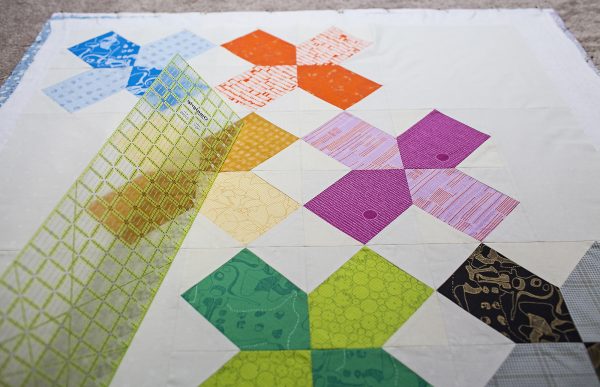
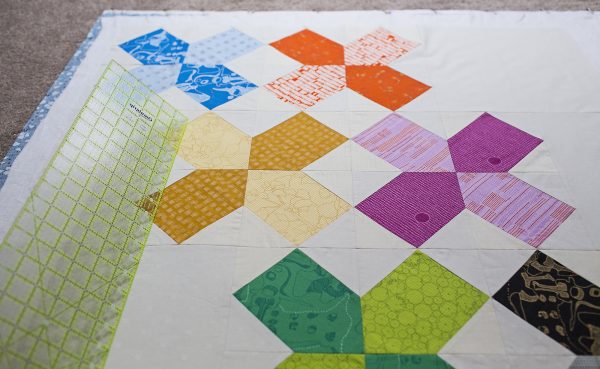
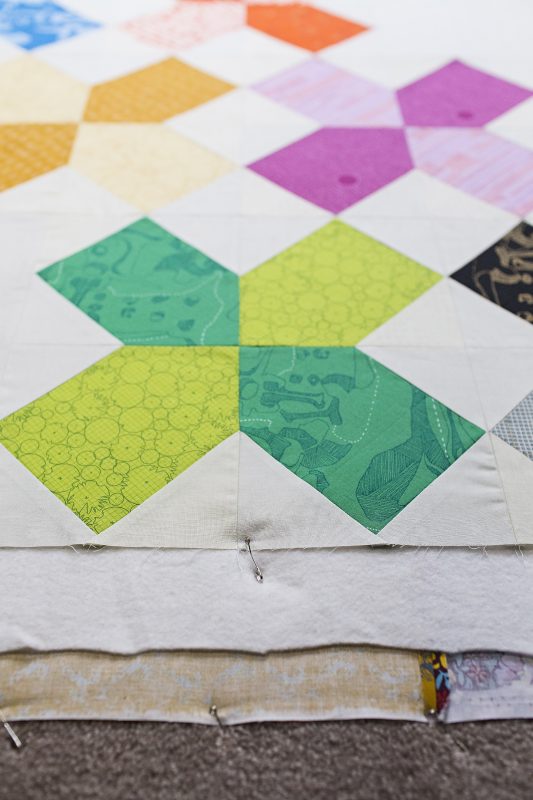
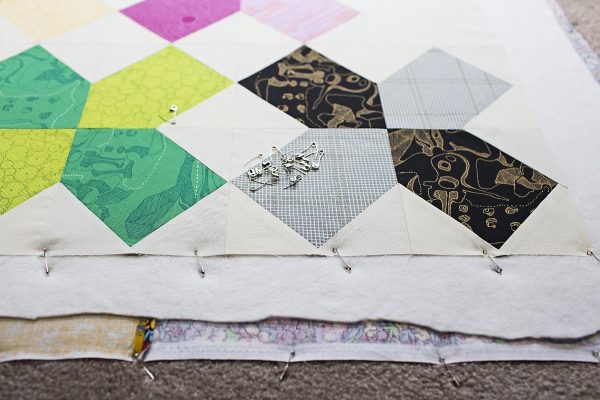
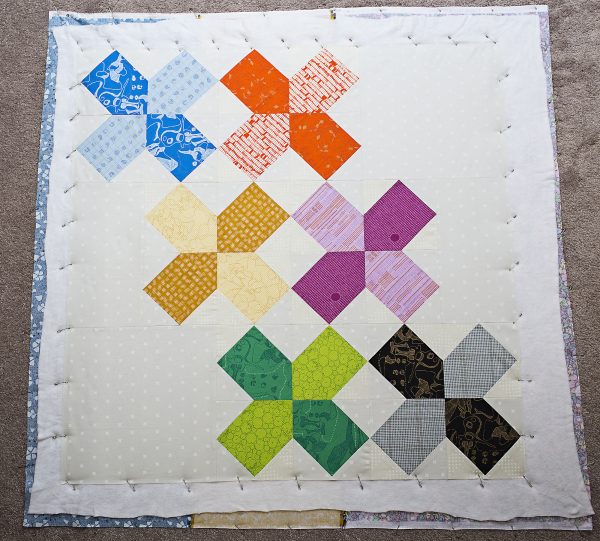
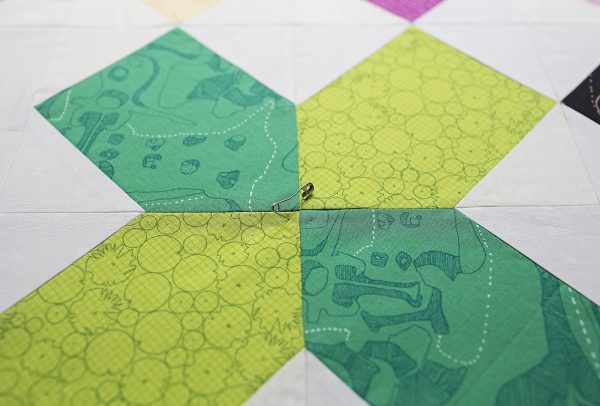
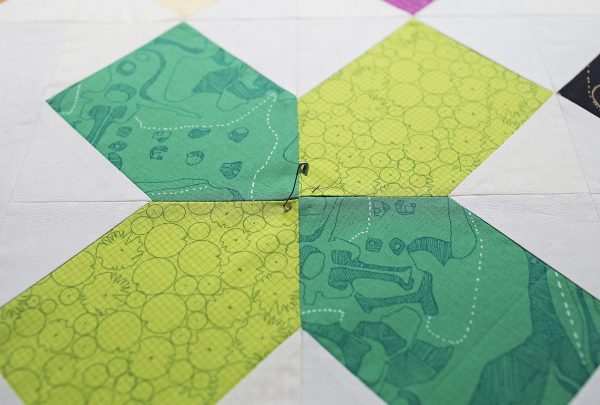
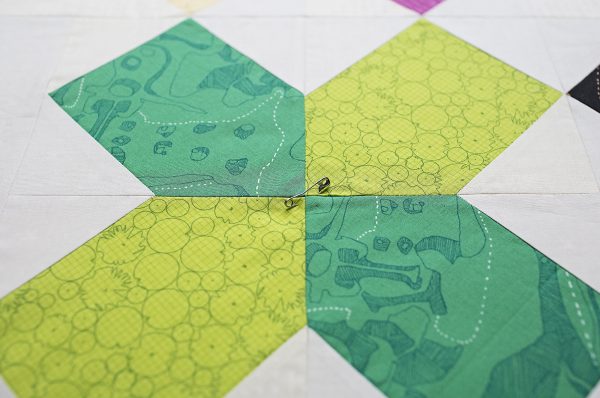
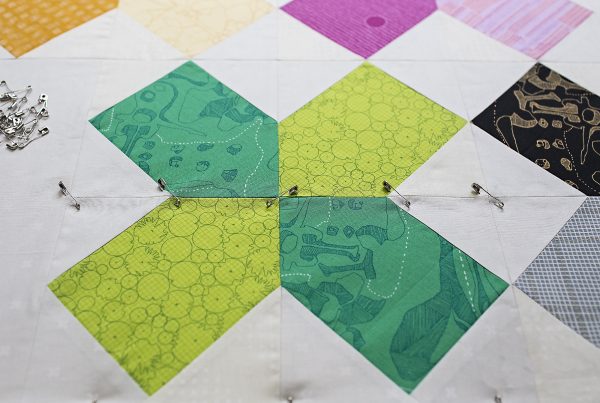
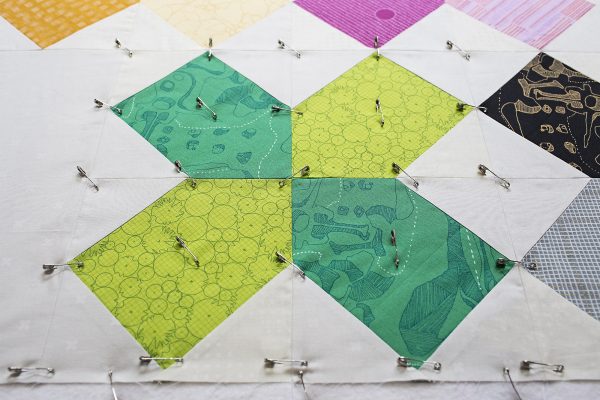
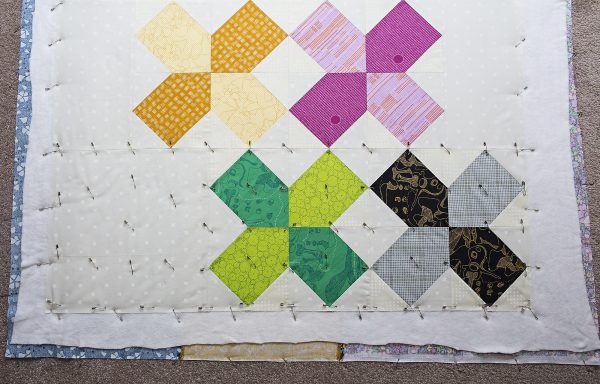
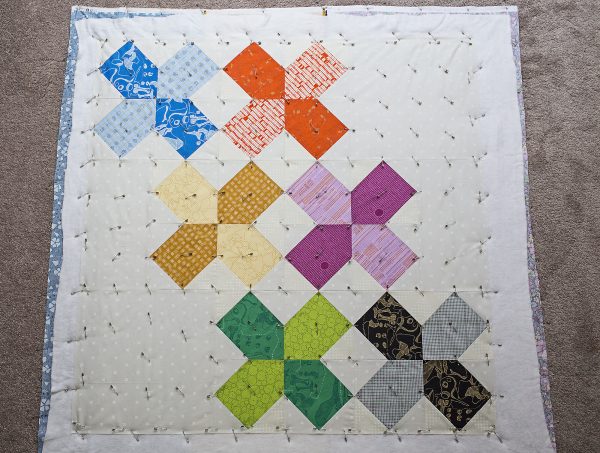
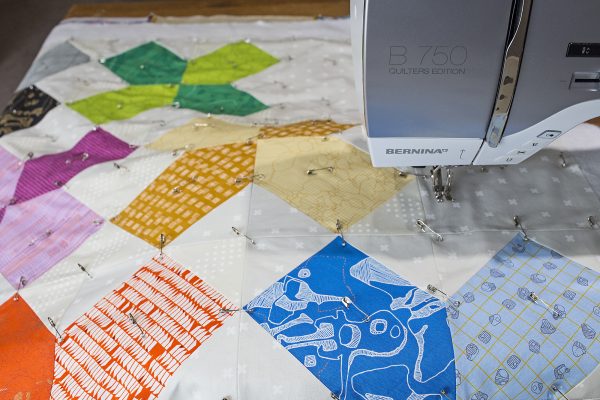




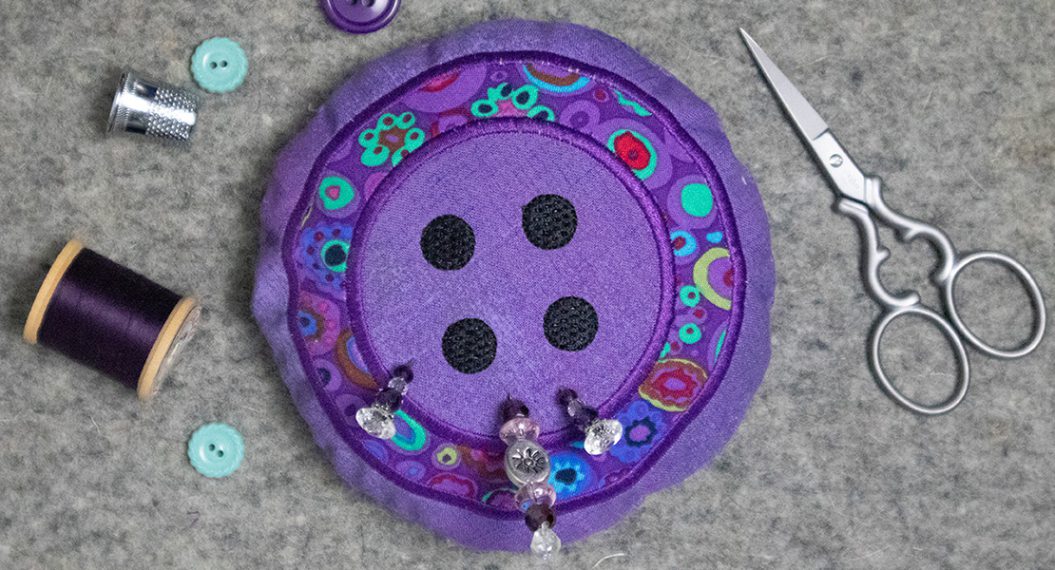
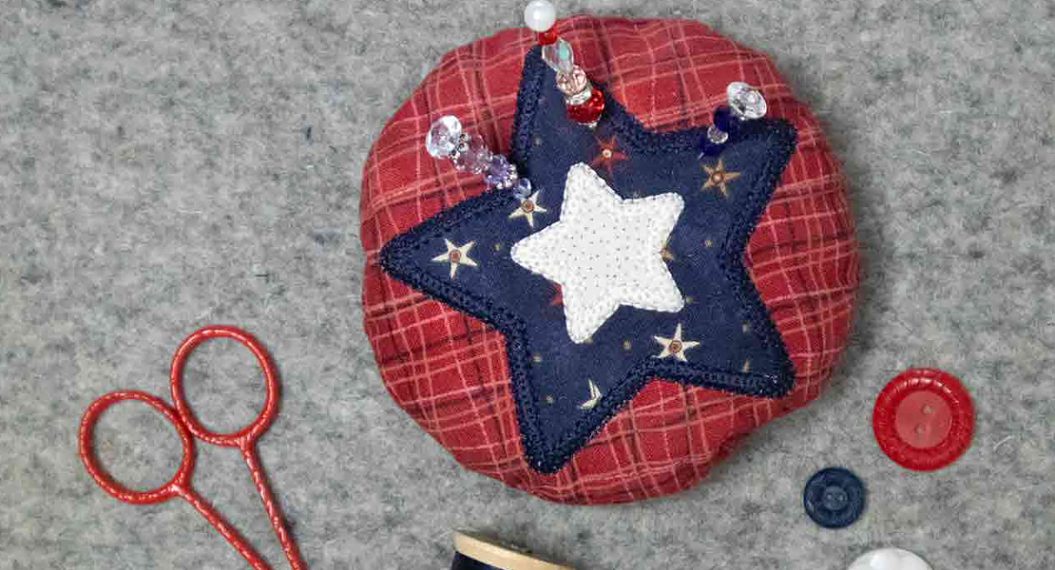

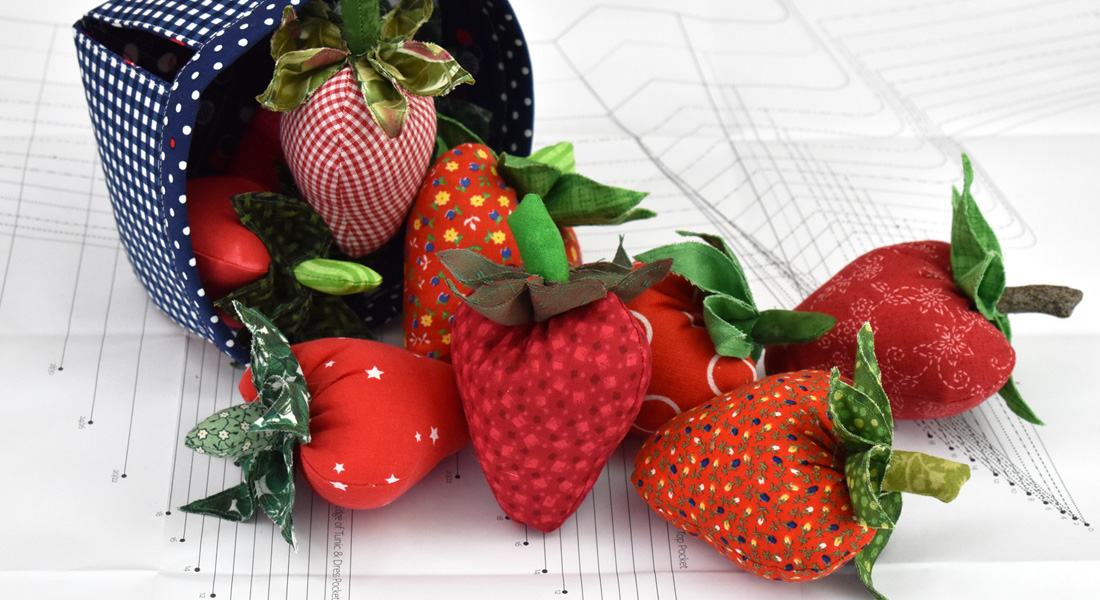
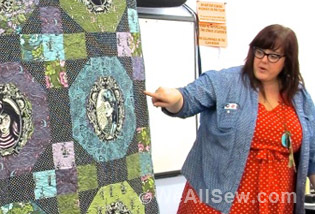
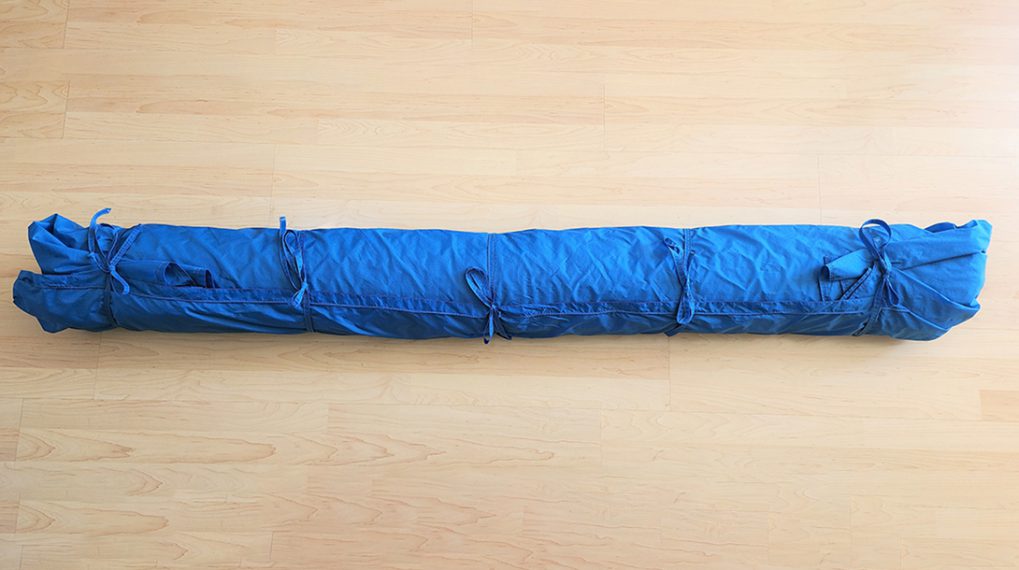
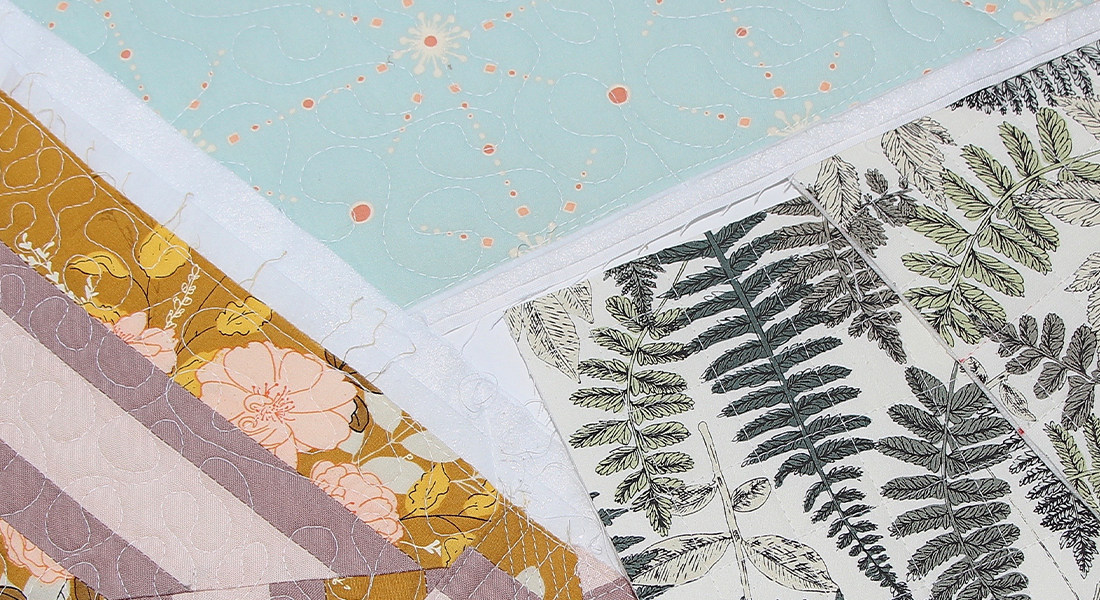

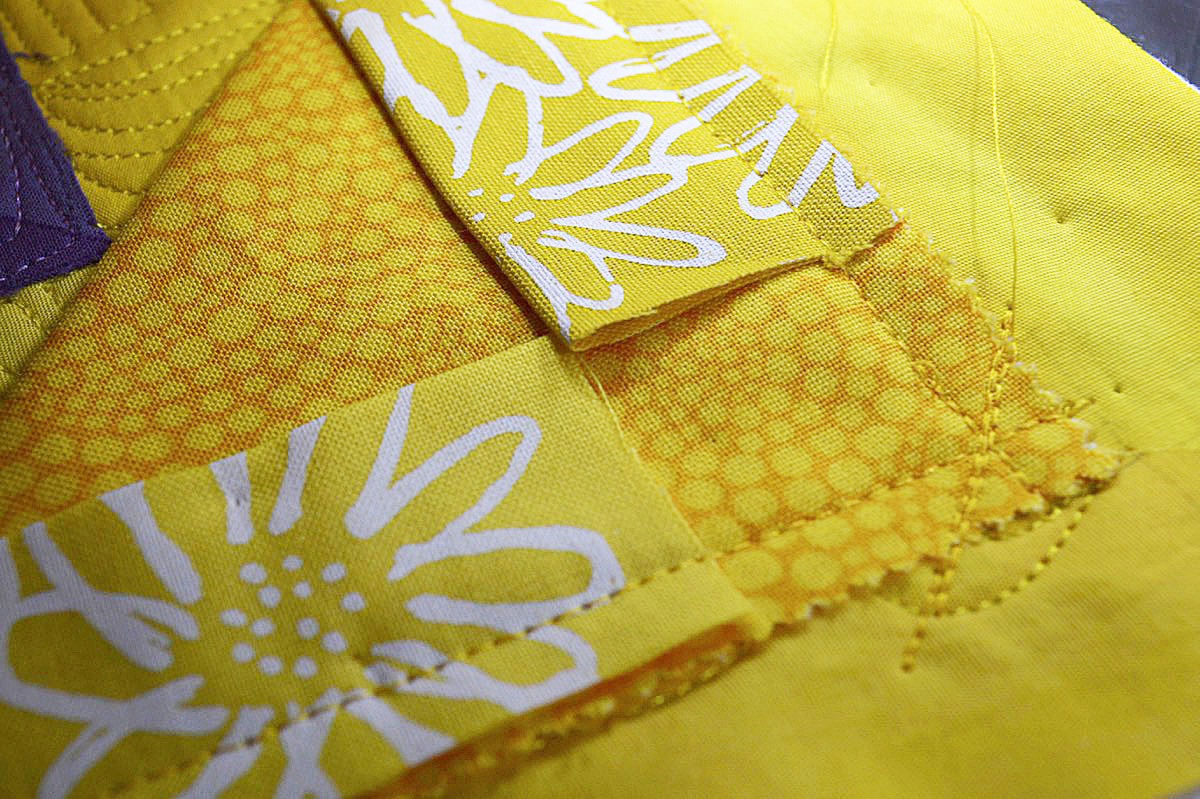
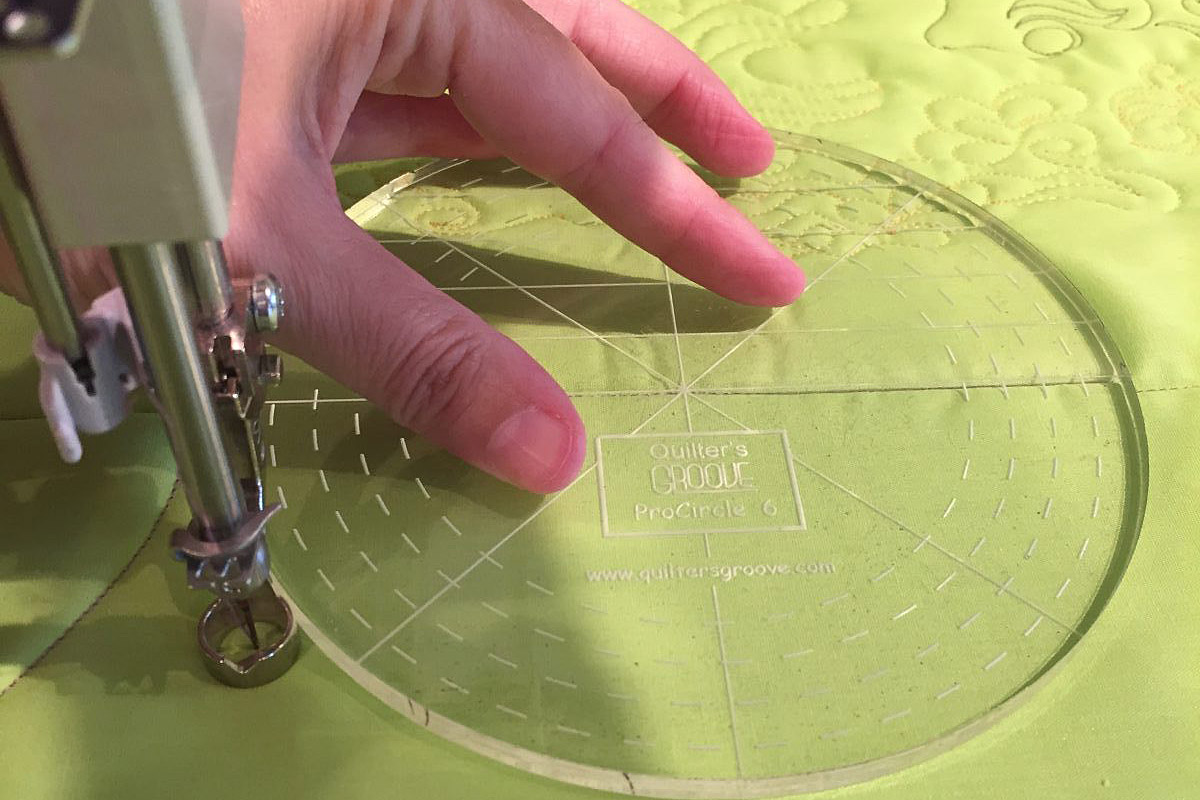
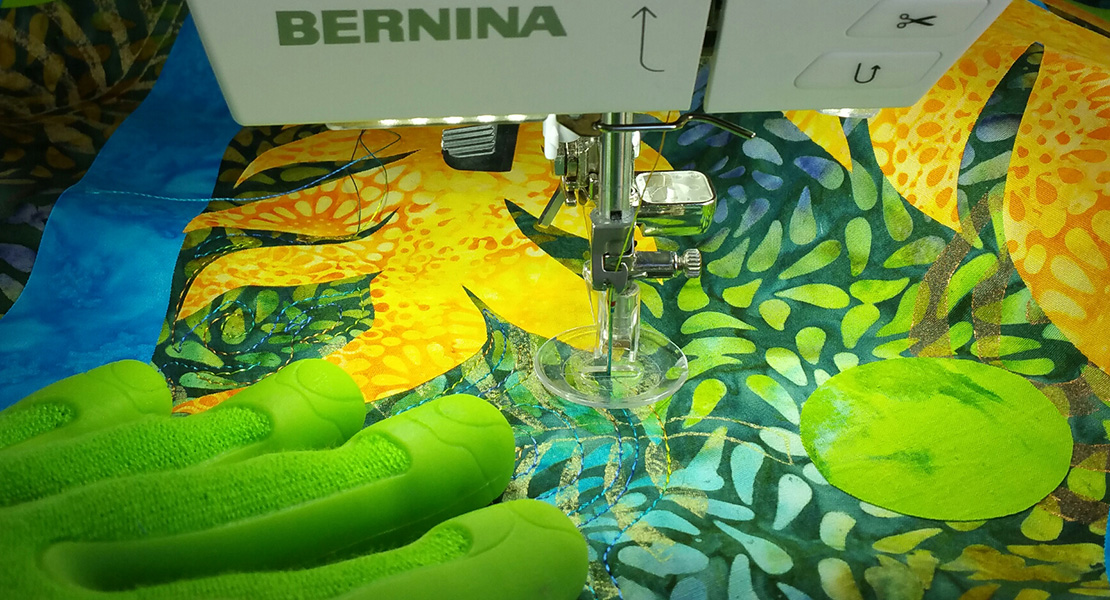
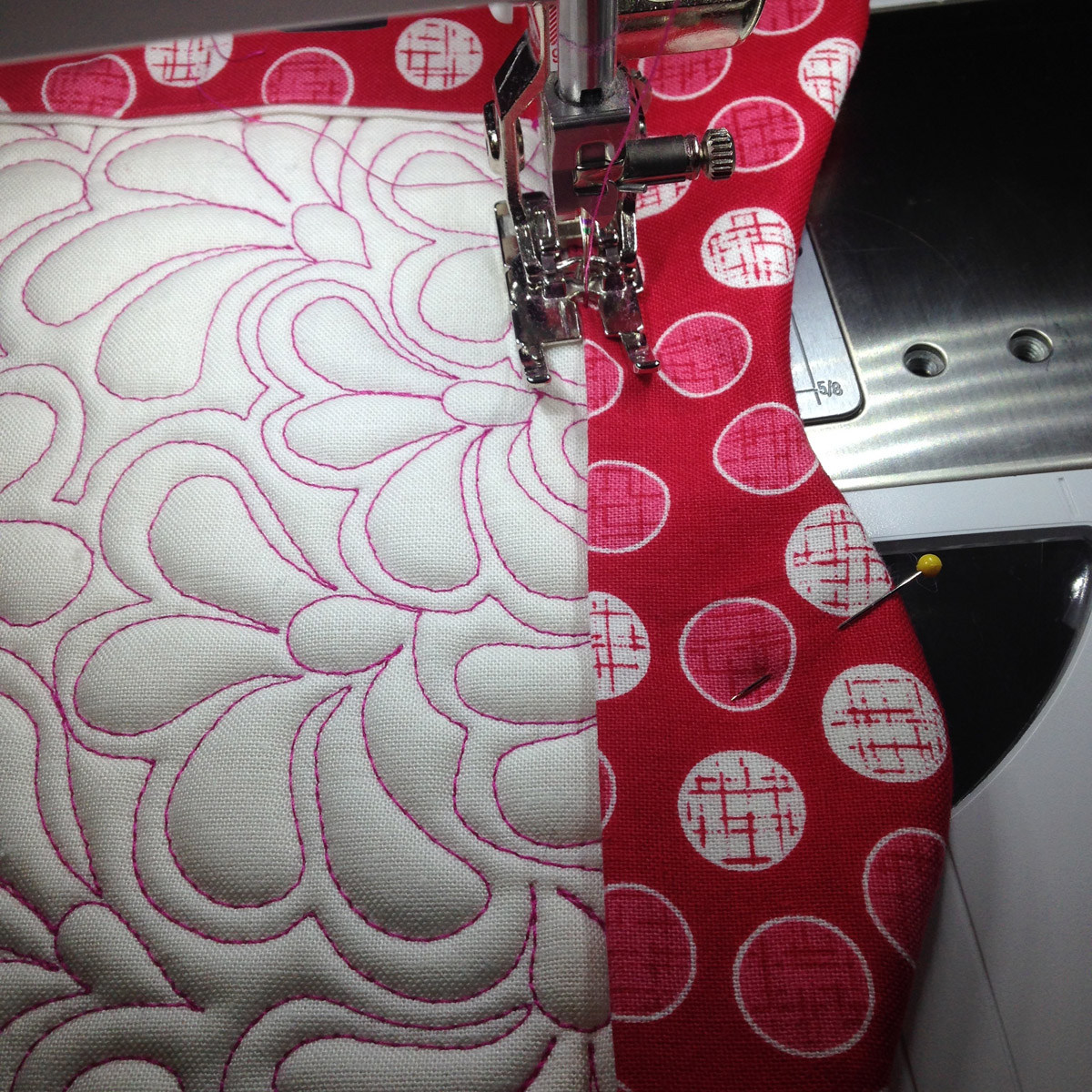
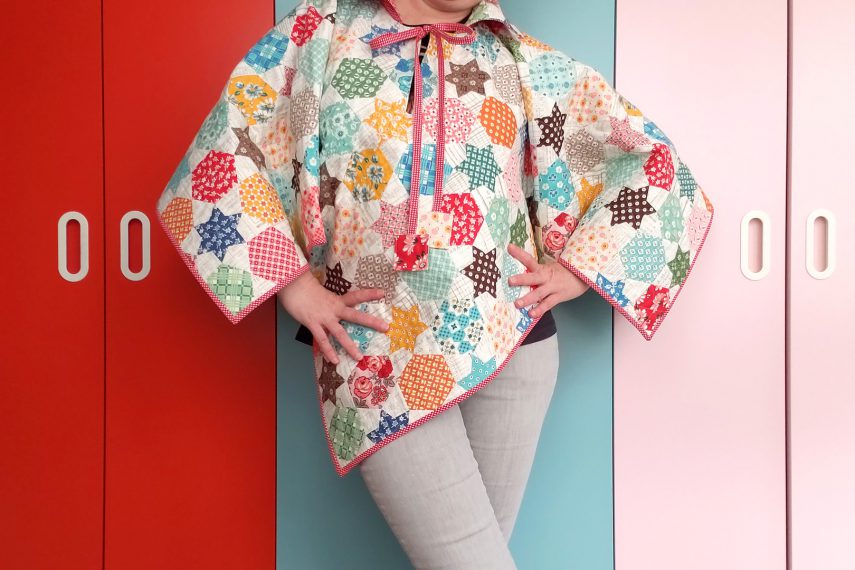

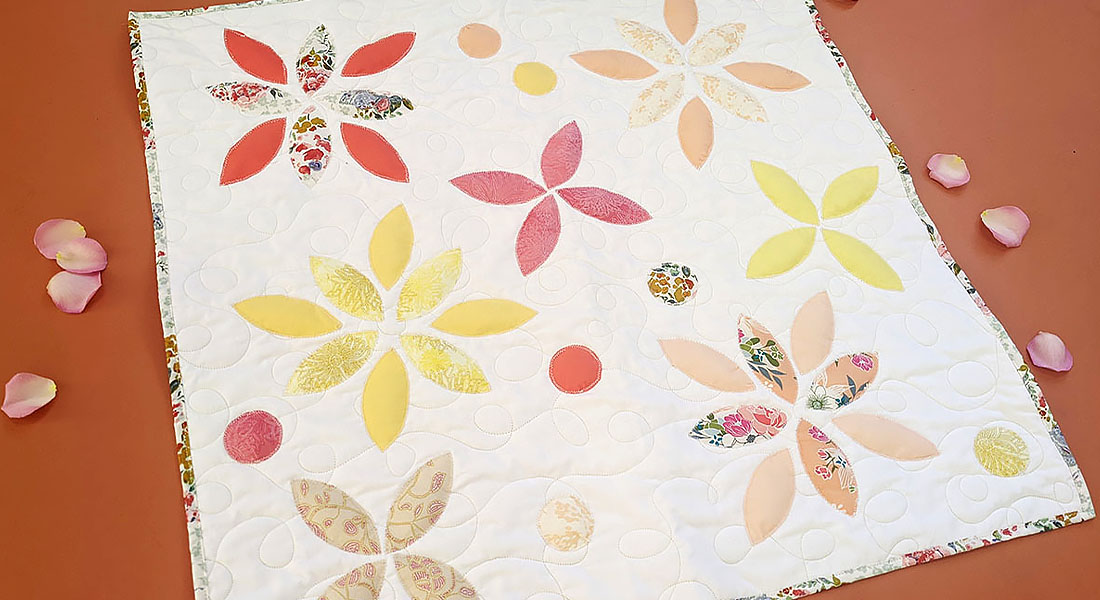
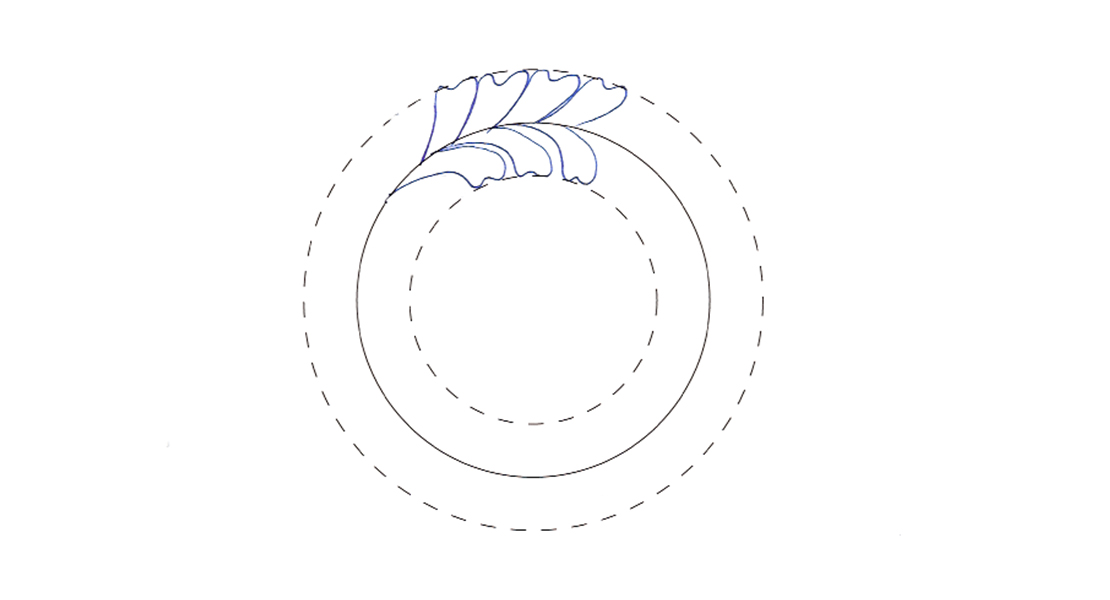

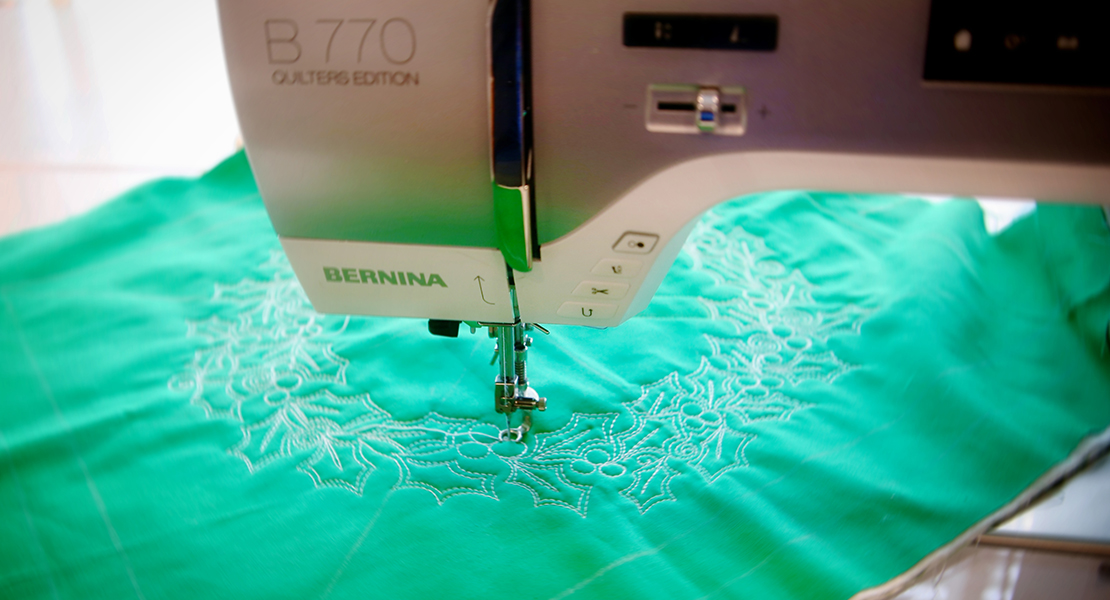
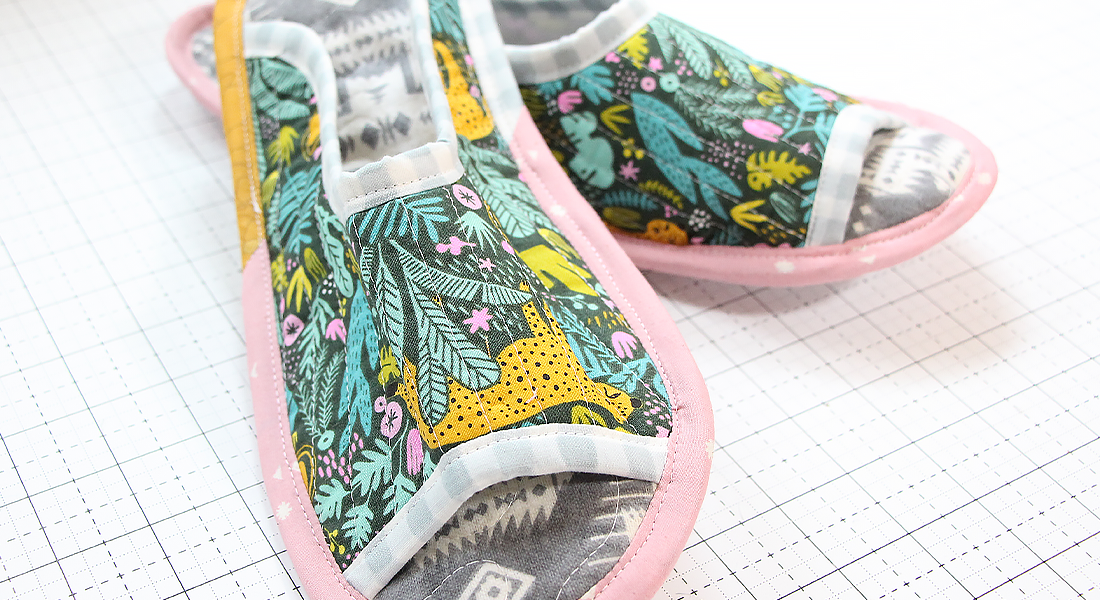
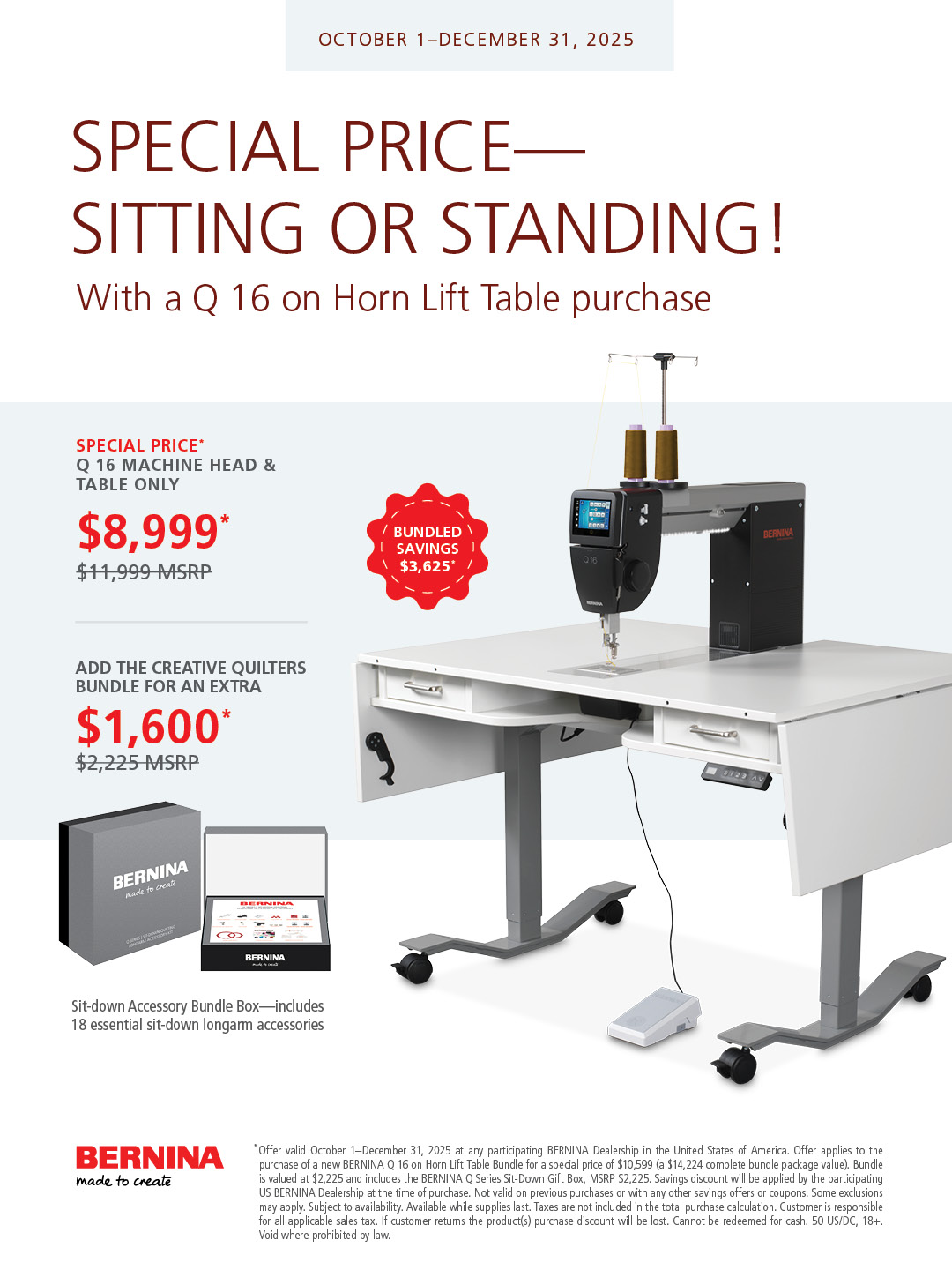
7 comments on “How to Pin Baste a Quilt”
I have been taught, and also teach my students, to NOT line up safety pins in rows. When you pin in a grid layout, you’re continually pinning the same warp and weft threads over and over again. Instead, pins should be scattered randomly, turned different directions, so as to pin/capture as many as possible of each warp and weft thread. That way the quilt top has fewer gaps in pin coverage, and is more stabilized.
I never knew how to pin baste, I’ve heard about it, but never saw it demonstrated. I use double sided fusible batting. But when I press it to my backing and pieced tops, it often flattens out too much and the quilt loses a lot of the loft. I will try this method as it looks like a better way to maintain the loft. Thanks
I always angle my pins on the bias. They enter more easily that way. I cannot kneel without pain so instead of the floor, I use the top of my hot tub (on a breezeless day!) with painter’s tape. If the quilt is small enough, I use my folding cutting table which is much easier on the back and rolls around as I pin.
Where can I find this quilt pattern?
This seems to be a great idea, if you have carpet.
What size pins do you use?